WAYBRIGHT REENACTS PHILIPPI BATTLE - Bridge Site Of First Land Fight Of Civil War
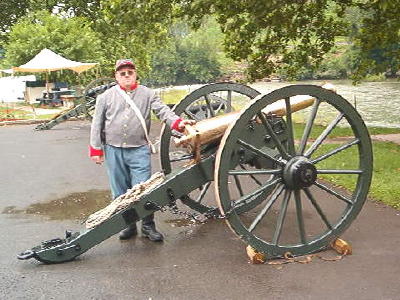
Reenactor Calhoun resident Fred Waybright stands beside 1857 solid bronze cannon at "Battle of Philippi" - Photo by Richard Postalwaite
Fred Waybright is one of many who have joined reenactment groups who participate in dozens of Civil War events around the country, belonging to the Kanawha Artillery, Battery D of St. Marys.
Last weekend his unit joined about 250 other reenactors at the Blue and Gray Reunion, to recreate the famous battle of the Civil War near the old Philipi covered bridge.
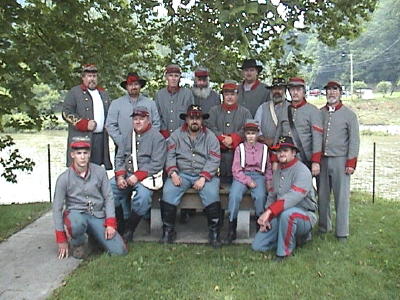
Kanawha Artillery, Battery D - Private Waybright (seated) far left
"There were two camps of Union soldiers and two camps of Rebel soldiers who participated in the action," say Waybright, who said it has been great fun for him. "I wish I'd gotten into it earlier in my life."
The historic first land battle of the Civil War was fought at Phillipi. June 3, 1861 was the unforgettable day, the bridge an asset for both the North and the South. Union General George B. McClellan, who was not present for the battle, used the Federal victory to gain command of the Army of the Potomac.
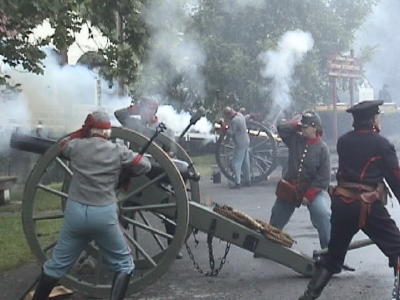
Lemuel Chenoweth, one of America's master covered bridge builders, built the Philippi covered bridge in 1852, now considered a masterpiece. The 285 foot structure is the only remaining "double-barreled" covered bridge serving a U.S. highway.
Many floods have ravaged underneath the bridge. In November 1985, the bridge survived a devastating flood, but barely stood erect after a fire on February 2, 1989. After a lot of work, the bridge was restored to its original condition and re-opened to traffic in 1991.
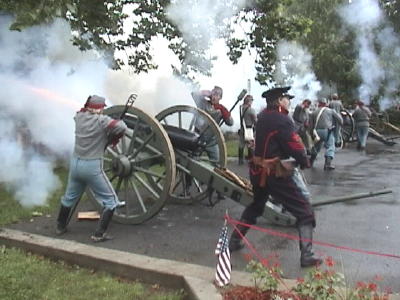
The Philippi covered bridge is one of the few remaining covered bridges in West Virginia. The state has lost about 72 covered bridges in a 40 year span.
History of the Barbour Grays
Colonel George A. Porterfield arrived in Grafton by train from Harpers Ferry on May 14, 1861. He was ordered by General Robert E. Lee, Commander of the Provisional Army of Virginia, to recruit troops for the Northwestern counties of Virginia.
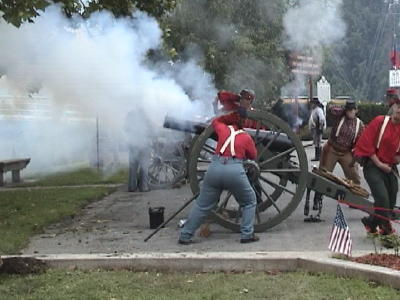
Having no success in Grafton, he found a number of companies being organized around Pruntytown. Porterfield was told that recruiting had been in progress in Philippi since April, where a company of men called the "Barbour Grays" had been organized.
Thomas A. Brandford, a Philippi attorney, was busy raising the Barbour Grays. These companies were without proper equipment. Their weapons were from home. No tents, no food supplies, and above all, no training.
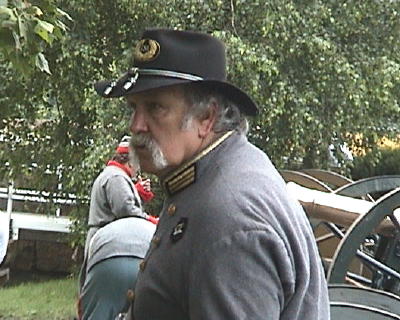
Col. Porterfield, who was a graduate of Virginia Military Institute and was a veteran of the Mexican War, reported to Lee that "the men couldn't even keep in step and the ones drilling the men were even more ignorant than the men."
On June 3, 1861, two companies of Barbour Grays were part of Col. Porterfield's command that relocated to the south, and became part of the 31st Virginia regiment as Company H.
Photos courtesy of The National Civil War Artillery Association ncwaa.com